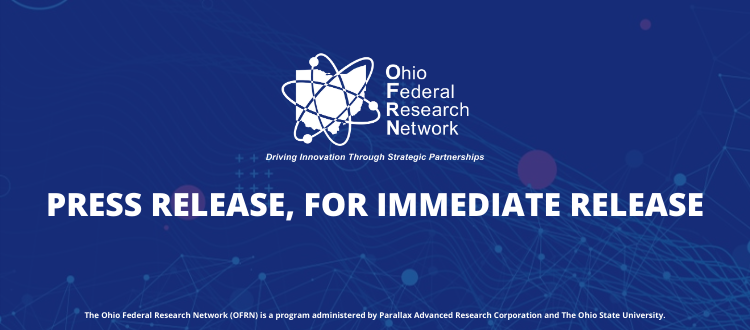(Springfield, OH)… An Ohio Federal Research Network (OFRN) project team, led by Dr. Vikas Prakash of Case Western Reserve University, successfully flew a drone outfitted with structural batteries for 171 minutes – nearly double the roughly 90-minute lifespan of a standard UAV battery —in a demo late February at Springfield-Beckley Municipal Airport in Ohio.
The project, Hi-Performance Multifunctional Structural Energy Storage, is one of 22 OFRN applied research projects. Leveraging the OFRN’s award of $450k, the project started in September 2016 to develop a new onboard energy storage system that distributes battery cells into the wings of the craft, rather than concentrating them in the fuselage.
This new technology offers the potential to decrease the total weight of the craft while freeing up space in the body of the drone to increase the vehicle’s mission efficiency — the drone can fly longer, travel further, or carry heavier payloads, such as advanced sensors otherwise impossible to fit on a standard UAV.
“This test demonstrates that the use of structural battery is a winning concept,” Prakash said. “This will allow our crafts to fly longer and/or carry heavier payloads without compromising fuselage space.”
OFRN fosters collaboration between Ohio’s research powerhouses and leverages seed funding from the state to land new follow-on research dollars from the federal and commercial sectors. To be funded by OFRN, a project must have at least two Ohio university partners, a commercial partner with a presence in Ohio, and real engagement with an Ohio-based federal lab.
“This new battery has a real chance to improve the day-to-day operations of our federal partners, and it has clear commercial applications,” Dennis Andersh, OFRN Executive Director, said. “We are proud to have enabled and supported this type of successful collaborative research.”
Event 38, an Akron-area drone company, and a commercial partner on this battery project, builds fixed-wing, unmanned aircraft for mapping and surveying applications. The company has customers in 40 countries who primarily use the drones for agriculture or construction purposes.
“The new structural battery system offers benefits that will appeal to our customers,” Jeff Taylor, Event 38 CEO, said. “The more efficient battery opens the door to build craft with more complex and sensitive sensors that small drones usually struggle to carry.”
Moving forward, Dr. Prakash will continue researching how to refine and optimize structural batteries utilizing different types of battery cells. Taylor and his team will continue researching how to manufacture and commercialize the structural battery components. In the future, the team hopes to scale the battery system to larger drones and even manned aircraft.
“The Springfield Beckley Municipal Airport is proud to host the demonstration flights in support of the Ohio Federal Research Network, in conjunction with our partners at the Air Force Research Laboratory (AFRL) and the Ohio UAS Center,” Tom Franzen, Springfield, OH Assistant City Manager & Director of Economic Development, said. “This collaboration offers an exciting opportunity to help spur innovation and economic development opportunities for our region and state.”
The research was conducted through the Ohio Partnerships for Research in Energy Storage and Integration for Defense and Space Exploration (PRESIDES) Program and managed by the Great Lakes Energy Institute at CWRU.
About OFRN: The Ohio Federal Research Network is a unique applied research collaborative created by the Ohio General Assembly in 2015. In just three years, it has leveraged $32 million in state funds to attract nearly $139 million in new research awards, with $350 million more in the funding pipeline. OFRN’s intent is to create external investment and business opportunities for Ohio by driving innovation and partnerships across Ohio’s top research institutions, Federal laboratories and industry partners. It focuses on priority research initiatives of Ohio-based federal partners including the Air Force Research Laboratory, the Naval Medical Research Unit Dayton, the National Air and Space Intelligence Center, and the National Aeronautical and Space Administration’s Glenn Research Center. OFRN research projects include 12 universities, 2 community colleges, and 60 industry partners. For more information about the Ohio Federal Research Network, visit www.ohiofrn.org.


